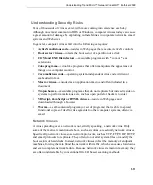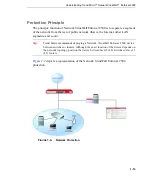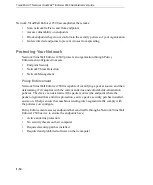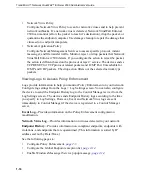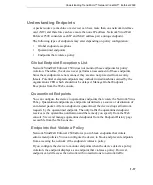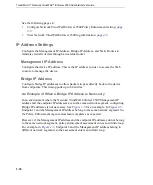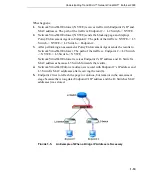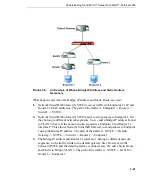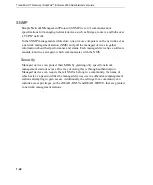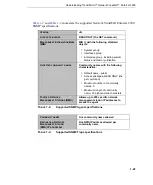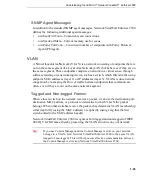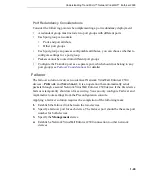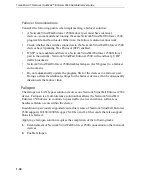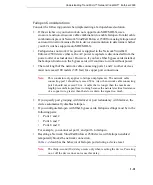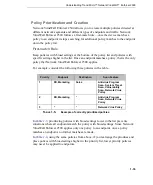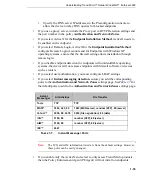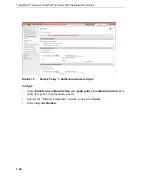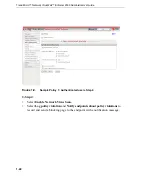
Understanding Trend Micro™ Network VirusWall™ Enforcer 2500
1
-
25
SNMP Agent Messages
In addition to the standard SNMP agent messages, Network VirusWall Enforcer 2500
defines the following additional agent messages:
•
nvwScanCurrConn—Concurrent scan connections.
•
nvwScanCurrMem—Current memory use for scans.
•
nvwPolicyCurrConn—Concurrent number of endpoints with Policy Enforcer
Agent (PEAgent).
VLAN
A
V
irtual
L
ocal
A
rea
N
etwork (VLAN) is a network consisting of endpoints that are
not on the same segment of a Local Area Network (LAN) but behave as if they are on
the same segment. These endpoints comprise a network in a virtual sense, through
software residing on a networking device, such as a switch, which filters traffic using
endpoint MAC addresses (layer 2) or IP addresses (layer 3). VLANs reduce network
congestion by managing the flow of traffic between endpoints that communicate
often, even if they are not on the same network segment.
Tagged and Non-tagged Frames
When a local switch on the network receives a packet, it can use the destination port,
destination MAC address, or protocol to determine to which VLAN the packet
belongs. When other switches receive the packet, they determine VLAN membership
either implicitly (using the MAC address) or explicitly (using a tag that the first
switch added to the MAC address header).
Network VirusWall Enforcer 2500 recognizes both tagged and non-tagged of IEEE
802.1Q VLAN frames, thereby preserving the VLAN structure on your network.
Tip:
If you use Control Manager and the Control Manager server on your network
belongs to a VLAN, bind Network VirusWall Enforcer 2500 to the same VLAN
(tagged or non-tagged). This will help ensure effective communication between
the Control Manager server and Network VirusWall Enforcer 2500.

